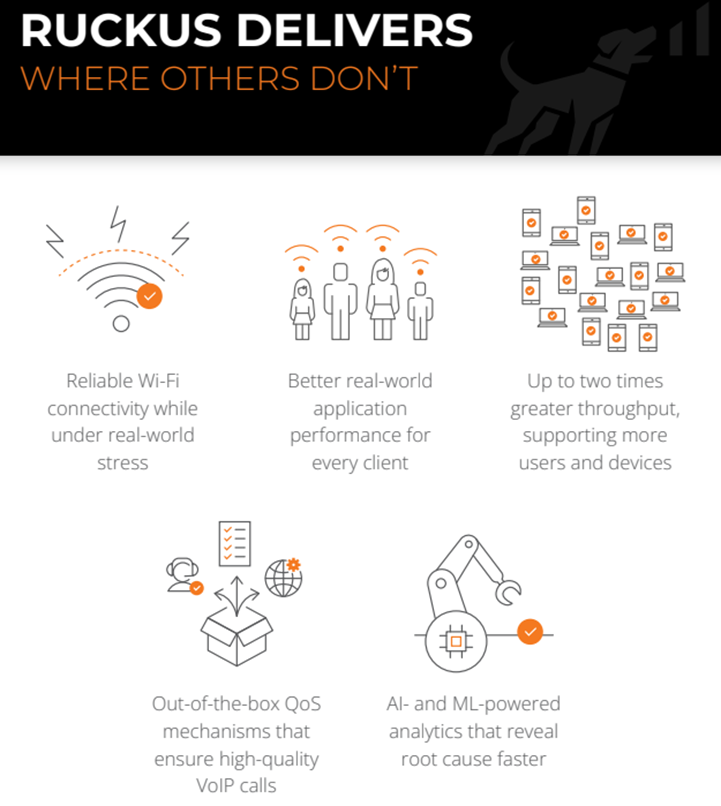
For over a decade, the rapid expansion of devices and applications has created an insatiable need for faster and better connectivity. Wi-Fi has proven to be a cost-effective method of providing network connectivity for devices and users during this time.
Nearly every company now has Wi-Fi. In fact, the demand for Wi-Fi among businesses is only going to grow in the future. There may be up to 80 Billion connected devices by 2025, up from “just” 30 Billion back in 2020. Many of these devices will rely on Wi-Fi, necessitating a greater demand for a service that is both broad and safe.
The Challenges of Wi-Fi in This era of Fast Connectivity
As Wi-Fi evolved, it has developed into something more than just a connectivity enabler. Organisations today rely on it on a daily basis to support how internal and external users connect with their company. The network must also be a secure and dependable link that can scale to accommodate a variety of new applications, devices, and use-cases.
The fact of the matter is that network applications (and expectations) are increasingly demanding, which means that providing consistently excellent Wi-Fi for a growing number of users will only become harder. Before long, “good enough” networking will no longer be good enough.

Four categories characterise the most endemic problems:
- Mobility: When a user moves out of an Access Point’s (AP) coverage range and needs to connect to another AP on the same network, the WLAN network must seamlessly migrate the user’s devices.
- Interference: Interference from walls and floors, other Wi-Fi networks, and appliances can all cause network congestion and a bad user experience.
- Network security: Failure to follow best practices for network security creates hackable attack surfaces for criminal actors aiming to steal intellectual property, money, or personal information.
- Density: In ultra-dense situations with a huge number of users and devices congregated in a limited space, such as a stadium or transit hub, Wi-Fi issues arise that cause network performance to deteriorate.
To keep up with the growth of devices, a new Wi-Fi protocol called 802.11ax or Wi-Fi 6 has been developed to address the issues listed above, and more. This new protocol has numerous advantages, including:
- Data transfer speeds: 802.11ax supports both the 2.4GHz and 5GHz bands, and maximum physical (PHY) data transfer speeds rise from around 1GE in 802.11ac to 10GE.
- Uplink multiuser, multiple input, multiple output (MU-MIMO): The 802.11ax protocol adds MU-MIMO support for simultaneous client data transmission upstream to APs, which is another improvement for congested situations that will benefit client experience on Wi-Fi networks.
- Orthogonal Frequency Division Multiple Access (OFDMA): OFDMA allows 802.11ax Wi-Fi equipment to splice traffic frequencies between APs and devices into resource units. This permits frequencies to be split into subcarriers, allowing traffic to be coordinated to serve more packets from more devices, hence improving network capacity.
For Exceptional Networking Experiences, Consider RUCKUS
Enterprises should evaluate not only the current standards when assessing Wi-Fi vendors but also the additional features and functionality offered by the advancement in standards. Consider RUCKUS by CommScope, which offers Wi-Fi 6 solutions that raise the bar on networking performance and capacity for mobile users, IoT devices, and latency-sensitive applications.

RUCKUS offers a diverse range of indoor, outdoor, and speciality APs, including the 802.11ax-based R730 access point, which is optimised for high-density environments. The R730 has 2.4GHz 4×4 and 5GHz 8×8 radios, as well as a 5GbE connector, and it supports all six 802.11ax essential features: OFDMA, MU-MIMO, better data rates, enhanced QAM, power efficiency, and OBSS colouring.
Click here to learn how to take full advantage of CommScope’s Wi-Fi 6 innovations and build the world’s most advanced networks within your organisation.





